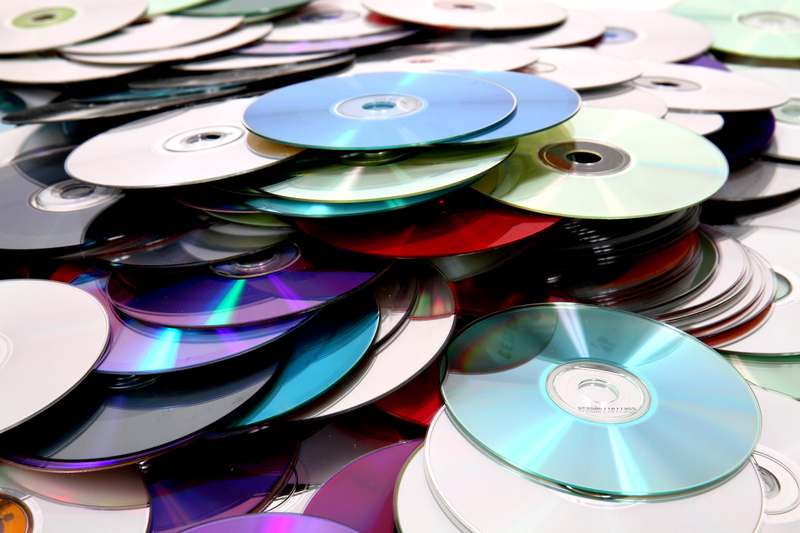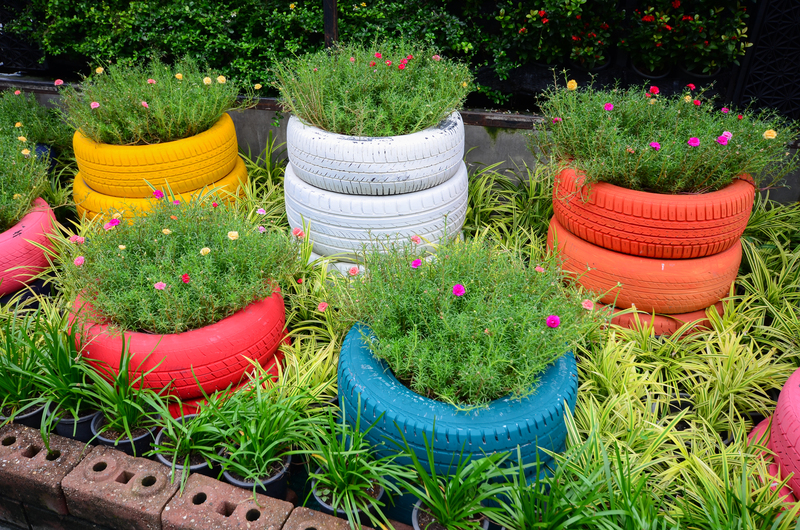Uncover Proven Strategies to Improve Home Recycling
Home recycling has become more important than ever in our modern society. With increasing concerns about landfill overflow and environmental sustainability, learning effective methods to boost your household recycling habits can make a significant difference. By incorporating proven strategies to improve home recycling, you can lower your carbon footprint, reduce waste, and contribute positively to your local community.

Why Focus on Home Recycling?
Many of us are aware of the importance of recycling, but the challenge often lies in making it a consistent part of our daily routines. Effective home recycling strategies not only help conserve natural resources but also save energy and reduce greenhouse gas emissions. By optimizing your recycling habits at home, you help create a ripple effect that benefits your neighborhood and the planet alike.
Mastering the Basics: Understanding What Can Be Recycled
The foundation of all home recycling improvements lies in understanding what materials can actually be recycled in your area. Recycling regulations differ by city or municipality, so always check with your local waste management service. Generally, recyclable items include:
- Paper and cardboard: Newspapers, magazines, boxes, office paper
- Plastics: Water bottles, milk jugs, detergent bottles (usually labeled #1 and #2 plastics)
- Glass: Bottles and jars
- Metals: Cans made of aluminum and steel
Pro Tip: Contaminants like greasy pizza boxes, food-soiled paper, or broken glass often can't be recycled. Make sure to rinse containers and sort items properly before placing them in your bin for better recycling results.
1. Adopt an Effective Recycling System at Home
Start with Proper Bins and Placement
A simple but effective way to improve home recycling efficiency is to have clearly labeled recycling bins in convenient locations around your house. Consider the following best practices:
- Label bins with images and words (e.g., "Plastics Only", "Paper & Cardboard")
- Place bins near high-traffic areas, such as the kitchen, home office, and garage
- Use color-coded bins to visually differentiate between types of recyclables
Making recycling easy and accessible encourages all household members to participate.
Include a Composting Bin
Don't forget about organic waste! Composting food scraps and yard trimmings not only reduces landfill waste but also provides you with nutrient-rich soil for gardening. Place a small compost caddy on your kitchen counter for quick disposal of fruit and vegetable peels, coffee grounds, and eggshells.
2. Educate and Involve the Whole Family
Make Learning Fun and Engaging
Successful home recycling programs require participation from everyone under your roof. Here's how to get started:
- Explain why recycling matters and how it helps the environment
- Host a family challenge to see who can recycle the most each month
- Create colorful infographics or posters showing proper recycling guidelines
When everyone understands both the 'how' and 'why' of recycling, compliance and consistency soar.
Tackle Recycling Myths Together
Bust common recycling myths as a family to avoid confusion and improve results. Common misconceptions include:
- All plastics are recyclable (False - check local rules!)
- Recycling is too complicated (False - organization and info help)
- If you recycle, it doesn't matter if there's still food in containers (False - contamination can spoil entire batches!)
3. Reduce, Reuse, THEN Recycle
One of the most effective strategies to improve your home recycling efforts is to change your consumption habits. Think of recycling as the last step after reducing and reusing.
- Choose reusable products: Use water bottles, coffee mugs, and shopping bags that can be washed and reused instead of single-use disposables.
- Avoid excess packaging: Buy items in bulk or with minimal packaging.
- Repurpose and donate: Repair, upcycle, or donate household items instead of tossing them in the bin.
By reducing and reusing, you naturally cut down on the volume of materials to recycle, making the process more manageable and effective.
4. Stay Up-to-Date with Local Recycling Guidelines
Communities often update their recycling rules as new facilities and technologies become available. Regularly check your city or county's waste management website for updates.
- Sign up for newsletter alerts from your local recycling center
- Attend community workshops on recycling best practices
- Download handy recycling apps that can scan products and tell you how to dispose of them
Staying informed ensures you're recycling correctly and efficiently--helping both the planet and your community.
5. Avoid Common Recycling Mistakes
Even the most well-meaning eco-conscious households can slip up from time to time. Avoid these frequent errors to ensure your recycling efforts don't go to waste:
- Recycling contaminated items: Keep food, oils, and liquids out of the recycling bin.
- Placing non-recyclable plastics: Pay attention to the plastic resin codes. Usually, #1 and #2 are widely accepted, while #3-#7 may not be in your area.
- Wishcycling: This is the act of putting an item in the recycling bin in the hope that it is recyclable. When in doubt, find out first!
Double-checking before you toss an item into the recycling bin helps cut down on contamination and ensures more materials are successfully processed.
6. Wash and Prep Recyclables Correctly
Before tossing containers in your bin, always:
- Rinse jars, bottles, and cans to remove food residue
- Flatten boxes to save space and make pickup more efficient
- Remove lids and caps, which are often made from different materials
Proper preparation increases the value of your recyclables and reduces issues for processing plants.
7. Explore Advanced Recycling Options
Tackle Hard-to-Recycle Items
Some household products--such as electronics, batteries, light bulbs, and plastic bags--can't go in your regular recycling bin. Instead:
- Use designated drop-off bins at electronic stores or supermarkets
- Check for local hazardous waste collection days
- Contact non-profit groups that specialize in electronics and specialty recycling
You can greatly expand what you recycle by taking a few extra steps beyond your curbside pickup.
Try Upcycling Projects
Another creative way to boost household recycling is to transform old items into new treasures. Upcycle glass jars into storage containers, or turn old T-shirts into cleaning rags. Not only does this keep items out of the landfill, it adds a unique personal touch to your home.
8. Build Community Connections for Recycling
Sometimes the best way to improve your home recycling habits is to work with others. Support your neighborhood's green initiatives and consider:
- Organizing a community swap event for clothes, books, and toys
- Hosting a recycling drive for electronics or household hazardous waste
- Volunteering for or starting a local recycling education campaign
Working together builds a stronger sense of community and shares the burden of environmental responsibility.
9. Track Your Recycling Progress
To continuously improve, track how much and what types of materials you recycle each week. You might be surprised at your progress! Use a simple chart or one of the many recycling apps available.
- Measure the weight or volume of your recyclables for each pick-up
- Set monthly goals for reducing landfill waste
- Celebrate recycling milestones with your family
By being mindful and goal-oriented, you can steadily boost your home recycling efficiency.

10. Keep Up the Momentum: Model and Repeat Best Practices
Consistency is the key to lasting change. Make recycling an effortless, automatic part of your day. Share your successes with neighbors, friends, and family to inspire a culture of sustainability around you.
- Keep up-to-date with recycling news and innovations
- Revisit your system every few months to spot new opportunities
- Encourage feedback and suggestions from household members
Conclusion: Make a Lasting Impact with These Proven Strategies to Improve Home Recycling
Improving your home recycling goes far beyond just sorting your trash. By staying informed, organizing your household systems, and involving your community, you can create a sustainable, eco-friendly lifestyle that sets an example for others. Every small change adds up to a tremendous impact on our environment and future.
Ready to take your recycling efforts to the next level? Start by implementing these field-tested, proven strategies today -- and inspire others to join the movement toward a cleaner, greener home and planet.
Summary Checklist: 10 Steps to Enhance Your Home Recycling
- Set up accessible, clearly labeled recycling bins
- Educate everyone in the household
- Focus on reducing and reusing first
- Keep updated with local recycling rules
- Avoid frequent recycling mistakes
- Prepare materials for recycling properly
- Utilize specialty recycling programs
- Get involved with your community
- Track your progress and set goals
- Model and repeat sustainable habits
Improving home recycling is easier, more impactful, and more rewarding than you might think--start today and make a difference, right from your doorstep!